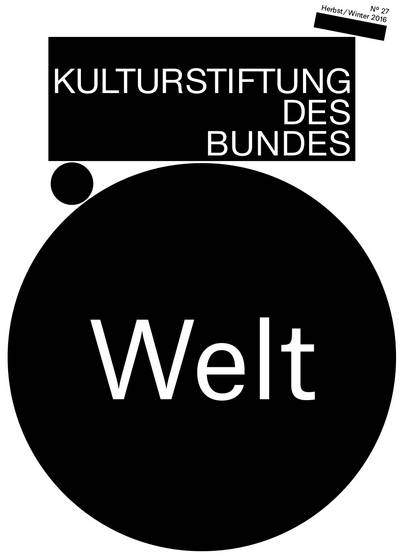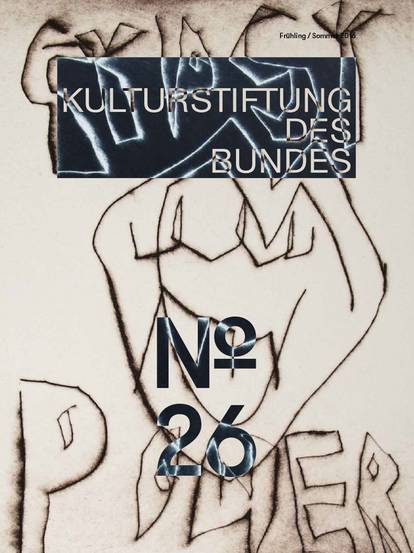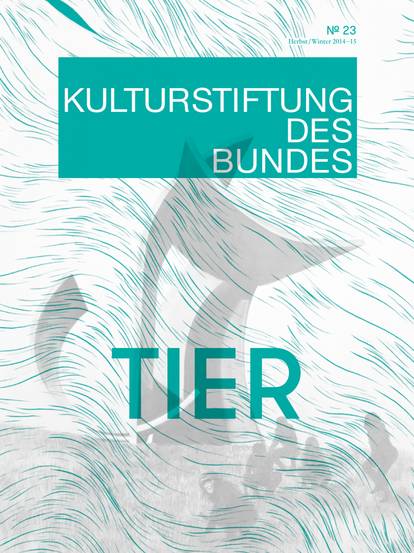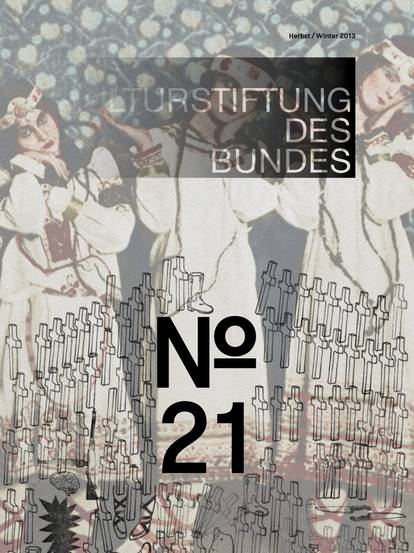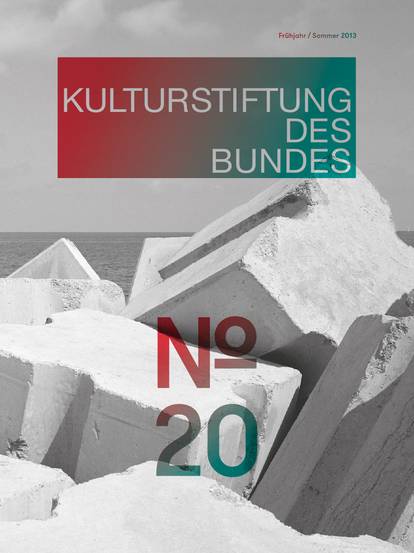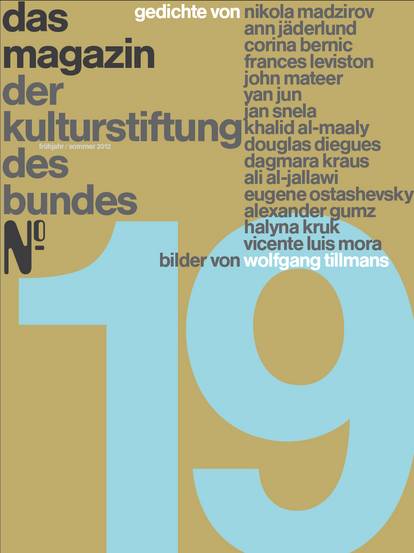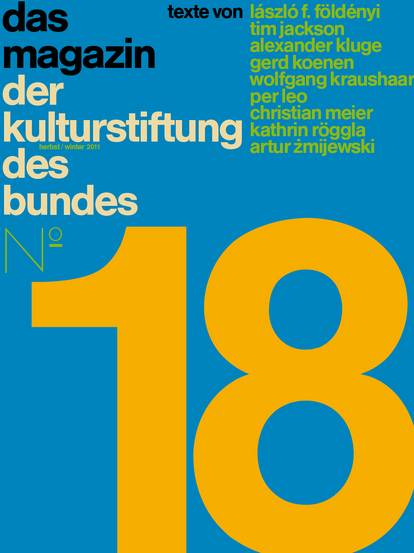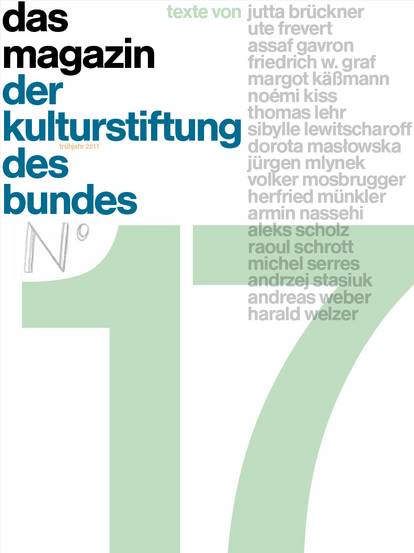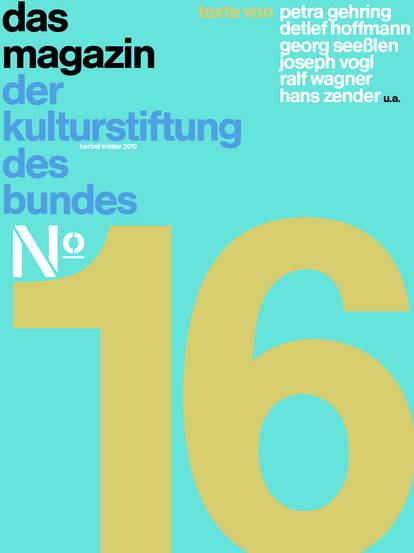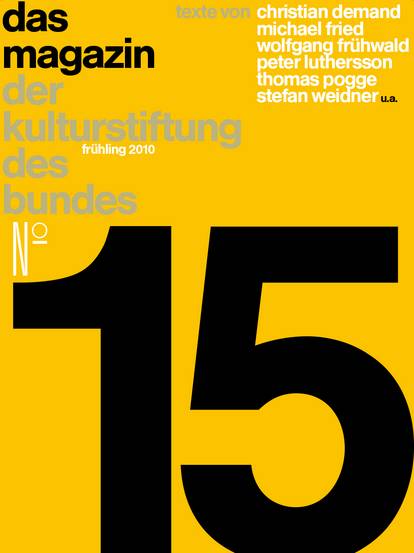Throughout the Anthropocene, humans have dominated the earth. Jürgen Goldstein explains how “nature writing” aims to highlight nature’s role in the interplay of life.
In order to portray nature in all its sublime greatness, one should not linger on outer appearances alone; one must also describe how nature is reflected in the human soul ...
Alexander von Humboldt
MODERN TIMES.
On 17 June 1844, modernity arrived in the small American town of Concord, Massachusetts. Crowds had gathered to celebrate the operation of a railroad line whose train would travel back and forth to Boston via Fitchburg four times a day. Although we may look back at those steam-powered locomotives with a sense of nostalgia, back then they offered a view to the future. In a still undeveloped country of sheer unlimited expanses, the American railroad of the mid-19th century marked the beginning of the Industrial Revolution there.
In this history of the rise of the modern world, Concord might hardly be worth a footnote if it weren’t for the fact that the new line passed a certain Walden Pond, the same Walden that served as Henry David Thoreau’s homestead for just over two years. On the banks of the lake, the solitary thinker built himself a small cottage where he faithfully kept a journal. The entries served later as the basis for his pioneering book Walden; or, Life in the Woods. The genre of “nature writing” was born – a non-fictional, literary narrative account of one’s experiences in nature and the attempt to express these in a precise and sensitive language. There is no equivalent German translation for this type of nature literature.
For generations of readers, Thoreau’s Walden has served as a literary signpost to the emphatic experience of nature. People tend to forget, though, that the railroad was built along the banks of Walden Pond. It was visible from almost every place around the pond, and the steam locomotives could be heard from even farther away. Thoreau was keenly aware of the advent of a new age and found it a devastating prospect. To him, the construction of the railroad itself symbolised the encroachment of the modern world into untouched nature: “That is the price we pay to have the railroad. All our so-called advances and improvements have the tendency to make rural life more citylike. I see nothing that compensates us for the loss this brings.” The spread of civilisation at the cost of untamed nature is a result of the globalisation that Thoreau was powerless to stop, for “to make a railroad round the world available to all mankind is equivalent to grading the whole surface of the planet.” Ever since then, nature has fallen to the wayside as a defining moment of experience in life. Many have long debated whether our human-driven age of technology deserves the name of the Anthropocene. For it all began so harmlessly with trains. Thoreau noted with apprehension how the sawmills were turning the forests of Maine into lumberyards. He claims there were two hundred and fifty sawmills in the region. The men working there seemed to be on a mission “to drive the forest all out of the country, from every solitary beaver swamp and mountain-side, as soon as possible.” Thoreau imagined with dismay how a Scot pine whose branches rustled in the four winds and whose needles trembled in the sun, would be sold to a match factory in New England. The use of nature as an economic resource proceeded faster than Thoreau could have ever foreseen. On 27 August 1859, engineers succeeded in drawing oil from the ground near Titusville, Pennsylvania. It was the moment that finally heralded a new industrial age. Suddenly nature became equated with capital waiting to be exploited. The repercussions have been dramatic. Hans Joachim Schellnhuber recently described it as the “self-immolation” of our planet as a result of unrestricted emissions and the greenhouse effect they have set in motion.
THE FUNCTION OF LANGUAGE.
Nature writing became a new, forceful and highly expressive form of language due in large part to the harshness of rational-economic modernism. In its resistance to a narrowly defined rational-economic modernism, nature writing sees itself as more than just another literary genre. It is not content with consoling urban inhabitants who hope to instil their otherwise meaningless lives with the originality and wildness of an idealised nature. The medium that is used to therapise such modern pathologies is language.
Scholars have grappled with the function of language since antiquity. Does it primarily serve purposes of communication as a vehicle for exchanging information? And then there is the instrumental function of language. In this respect, modern philosophies have emphasised its rationalistic character: words and sentences must describe reality as precisely as possible. This desire for clarity has tried to discipline language and generally questioned the validity of all subjective inclusions, metaphorical expressions and aesthetic harmonies. Poetry, the ambiguous word, an expression of sentiment in the face of perceived nature has become something personal and is only publicly tolerated in its aesthetic niche.
Johann Gottfried Herder and Wilhelm von Humboldt, on the other hand, underscored the expressive character of language. In their view, language is the central vehicle of human expression. As such, it assumes a world-encompassing and world-constituting function; for Humboldt, speaking and thinking are inextricably linked. The way we speak about the world has an influence on the reality we are presented with. Humboldt regarded language not merely as a means of communication, but as a “worldview”. Language-formed thought offers a perspective on the world. The breath-taking consequence: different languages engender different worldviews. This applies to national languages; the Chinese and French, Americans and Indians do not inhabit identical worlds; each world is expressed differently through its respective language and is thus different. The result is not, however, linguistic confusion à la Babel. There is unity in diversity, the proof being that all languages are basically translatable. But even within a national language, various linguistic forms can be cultivated: a natural-scientific rational form, an economic form, a poetic form. These varying language cultures influence what we perceive, experience and feel in very different ways.
Charles Taylor demonstrated the constitutive power of language like no other contemporary philosopher before him and called for linguistic forms which better reflect the subtleties of our relationship to reality. For him, it is essential that the experience of resonance is permitted: we are not neutral observers, but rather participants in a meaningful process of experience which is shaped through spoken language. Against this background, the project of nature writing acquires epochal weight. If the way we speak about things determines how we consciously perceive them, then the form of expression we choose for nature is no longer an inconsequential matter.
Nature writing explores this harmony between language and natural experience. “Seeing is largely a matter of verbalisation,” writes Annie Dillard in her book Pilgrim at Tinker Creek, published in 1974. “If I don’t consciously direct my attention to what happens before my eyes, I simply won’t see it.” Language is thus a means of heightening attention: “I have to say the words, describe what I see.” In this respect, nature is no longer a neutral object of rational thought. Rather it requires a willingness to let it reflect what lies within us.
To achieve this, we need a language that serves as resonance chamber, as a place where nature appears. In his book The Mountains of California of 1894, John Muir described the towering trees and magnificent landscapes of what would later become Yosemite National Park. In the 1950s Edward Abbey purposely sought the loneliness of the Utah desert and tried to convey his experiences in his book Désert solitaire. Roger Deakin decided to venture on a swimming journey of the British Isles. In his swimmer’s logbook Waterlog, published in 1999, he documents his attempt to recapture the unexpected enclaves of an overdeveloped cultural landscape. In the recently published book The Wild Places, Robert Macfarlane endeavours to map out the hidden wildernesses in the overdeveloped cultural landscape – a modern-day Thoreau.
Even if no German equivalent for “nature writing” exists, there are writers of German-language literature who have performed such undertakings and proven their ability to defend our relationship with nature through ecstatic linguistic forms. Werner Herzog, for example, who set out on foot on a journey from Munich to Paris on 23 November 1974. Lotte Eisner, the figure of integration in German film, was lying in a Parisian hospital on her deathbed. Herzog wanted to fight for her survival. “I took a jacket, a compass and a matchsack with the bare necessities. My boots were so rugged and new that I had complete faith in them. I headed out on the straightest path to Paris, fully convinced she would still be alive if I travelled there on foot.” And thus begins the first entry in a diary describing an enchanting pilgrimage which Herzog later published as Vom Gehen im Eis (Of Walking in Ice). In his book, Herzog describes how he braved the cold and snow, the wind and rain, how he ventured into wintry barrens to find solitude and achieve his goal. With precise clarity and in crisp prose, he describes the soggy fields, soil sticking to his boots, the frigid wind cutting into his face and the tortuous gales of snow. Herzog’s text contains everything that distinguishes nature writing: a description of nature and the revelation of one’s emotions in the face of nature.
NATURE WRITING — DEFENDED FROM ITS ADMIRERS.
The new enthusiasm for nature is now producing strange fruits. Books about animals are as highly popular in bookstores today as literature which promise to reveal the secret of the forest or the supposed language of the trees and animals. As questionable as many of these products are, they demonstrate a profound need in modern society to see nature as caring enough to provide answers to how one can achieve a good life. As the wave of nature literature grows, there is also growing unease with a purely rational domination of our world. The risk is that sentimentality and unfiltered subjectivism will infiltrate nature writing so that it turns its back to modernism to satisfy the sensual needs of its readers. But there is no “back-to-nature” which could ever remove the imprint of the accomplishments and disruptions of Western culture from our minds.
Only in the tense interplay between nature and modern culture does nature writing assert its topicality and develop its diagnostic and therapeutic potential. Writing about nature without this tension poses the risk of turning it into “nature kitsch”, especially when it succumbs to the temptation of meeting our need of an intact nature. That is why it is imperative to defend nature writing from its most avid enthusiasts. For it boils down to the question of whether it can contribute to fostering a modern cultural relationship to nature which is no longer defined by exploitation and destruction.
Thoreau mentioned the “dignity of nature”. Perhaps now more than ever, we should take this concept seriously, namely the formulated, but not yet manifest notion of the intrinsic value of nature. But can we find a reason to respect the dignity of nature at the height of our times without reverting to premodern worldviews which passes the litmus test of criticism? Is it capable of steering our beloved practices of consumption and exploitation down a more reasonable path? In order to experience and imagine nature differently, it might be necessary to start talking about nature in alternative forms.
Jürgen Goldstein (*1962) is a professor of philosophy at the University of Koblenz-Landau. In 2013 he published the book Die Entdeckung der Natur. Etappen einer Erfahrungsgeschichte. (The Discovery of Nature. Stages of a Story of Experience). He received the Gleim Literature Prize in 2015 and the Leipzig Book Fair Prize in the category “Non-fiction” for his book Georg Forster. Zwischen Freiheit und Naturgewalt (Georg Forster. Between Freedom and Force of Nature). His book Blau. Eine Wunderkammer seiner Bedeutungen (Blue. A Wunderkammer of Meanings) was nominated for the Bavarian Book Prize in 2017 in the category “Non-fiction”. In autumn 2019 Goldstein’s publisher Matthes & Seitz will release his latest book Nature Writing. Sprache als Erscheinungsraum der Natur (Nature Writing. Where Nature Appears in Language).

![[Translate to English:] Magazine 38](/fileadmin/_processed_/f/1/csm_Magazin38_Cover-Vorschau_921x1230_689f428dc3.jpg)
![[Translate to English:] Magazine 37](/fileadmin/_processed_/b/c/csm_Mag37_Cover-Vorschau_921x1230_b5129fdb2a.jpg)
![[Translate to English:] Magazine 36](/fileadmin/_processed_/2/a/csm_Cover_Magazin36__issuu_2f3cef97bb.jpg)

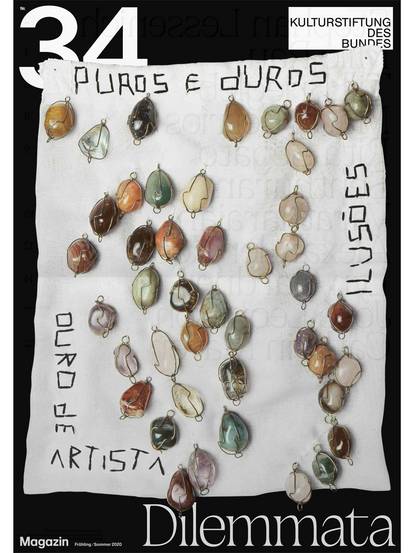
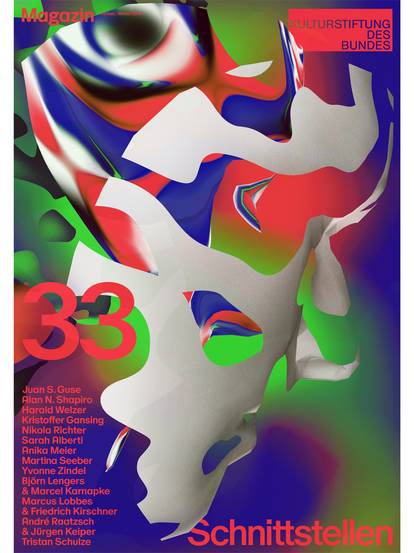
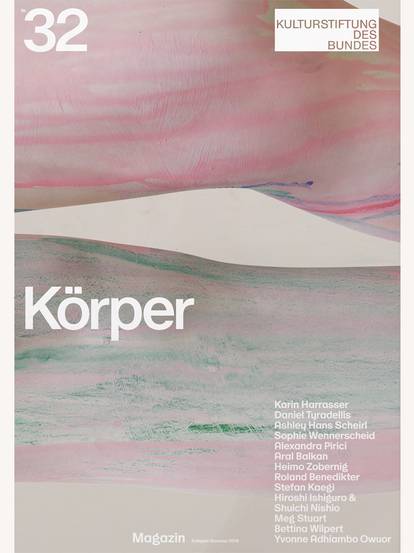
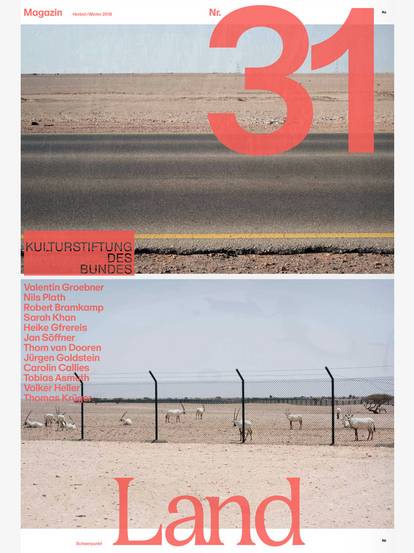
![[Translate to English:] Magazine 30](/fileadmin/_processed_/c/b/csm_magazin30_vorschau_9005f773d3.jpg)


